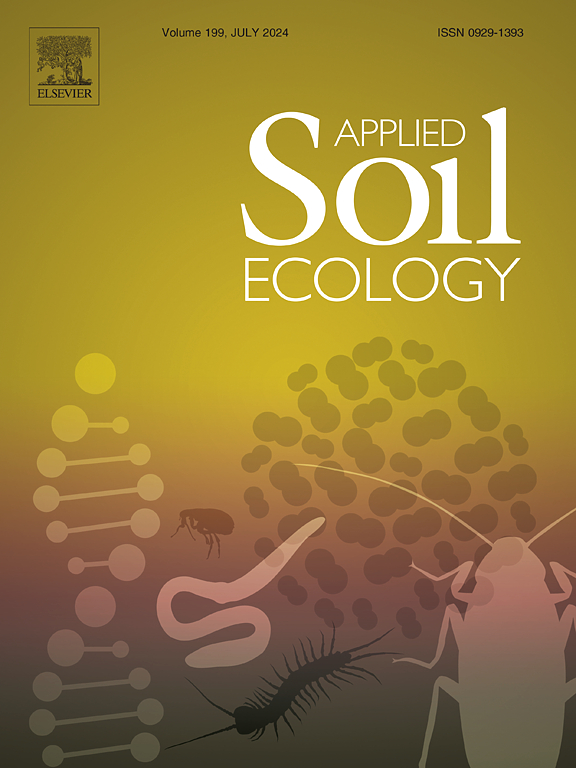Inoculations of phosphorus-solubilizing bacteria alter soil properties, microbial communities, and improve crop yield and fruit quality in the tomato production system
IF 4.8
2区 农林科学
Q1 SOIL SCIENCE
引用次数: 0
Abstract
Phosphorus fertilizer is essential for crop growth and development, but its low utilization efficiency limits crop productivity. Phosphorus-solubilizing bacteria (PSB) can enhance phosphorus conversion, contributing to sustainable agriculture. In this study, a field experiment was conducted to evaluate the effects of PSB Acinetobacter baumannii B6 and Burkholderia cepacia Z7, screened from maize rhizosphere soil, on tomato yield and quality. Additionally, changes in the physicochemical properties, soil enzyme activities, and microbial community structure of tomato rhizosphere soils were observed. The results showed that tomato yield increased by 12.93 %, 10.16 %, and 24.70 % with the application of B6, Z7, and B6 + Z7, respectively, compared to the control. After adding composite bacteria (B6 + Z7), the content of soluble sugar, soluble protein, vitamin C, and organic acid content increased by 11.71 %, 22.22 %, 18.03 %, and 7.16 %, respectively. Both single and composite bacterial solutions significantly improved tomato quality, with the composite bacteria having a more pronounced effect. In addition, the B6 + Z7 treatment increased the total phosphorus (TP), available phosphorus (AP), available potassium (AK), and alkaline phosphatase (ALP) content by 12.05 %, 7.13 %, 36.88 %, and 27.66 %, respectively. The PSB application also altered the microbial community structure in tomato rhizosphere soil, significantly increasing the relative abundance of the Proteobacteria. In conclusion, this study provides positive insights into the comprehensive utilization of phosphate fertilizers and the improvement of agricultural production.

求助全文
约1分钟内获得全文
求助全文
来源期刊

Applied Soil Ecology
农林科学-土壤科学
CiteScore
9.70
自引率
4.20%
发文量
363
审稿时长
5.3 months
期刊介绍:
Applied Soil Ecology addresses the role of soil organisms and their interactions in relation to: sustainability and productivity, nutrient cycling and other soil processes, the maintenance of soil functions, the impact of human activities on soil ecosystems and bio(techno)logical control of soil-inhabiting pests, diseases and weeds.
 求助内容:
求助内容: 应助结果提醒方式:
应助结果提醒方式:


